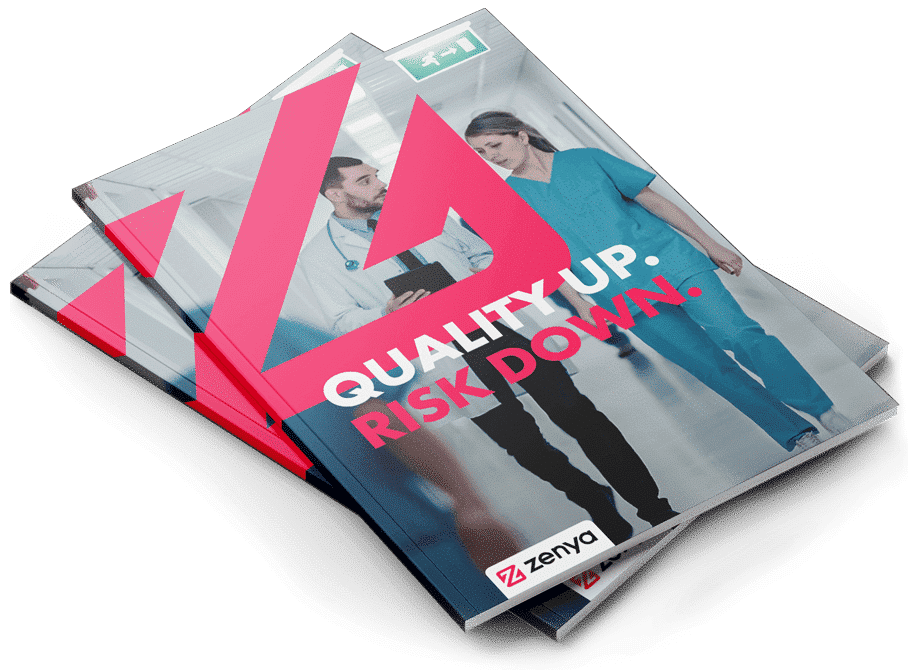What are our most significant risks? For years, the management of hospital Tjongerschans in Heerenveen (The Netherlands) answered this question based on instinct. However, comprehensive risk management has visualised all risks, including possible consequences and measures. This provides insight but also entails a cultural shift.
As in every other organisation, a lot can go wrong in a hospital. Think of medical data that gets lost, vulnerable patients who fall, malnutrition, malfunctioning equipment, and employees who fall ill over a longer period—all factors that may influence the quality of care and the organisation.
Hospital Tjongerschans acknowledged these risks but up until two years ago, they could not sufficiently answer the question ‘What are our three biggest risks?’. “We mostly worked a hunch,” Irene ten Brummelhuis, Head of the Quality Department at hospital Tjongerschans, explains. “Sometimes it is difficult to determine how considerable a risk is, what the consequences are, and if the measures will have the desired effect. To achieve our policy objectives, clear insight is an absolute necessity. This includes anticipation on how to accomplish these objectives. Since 2015 we’ve been working with Zenya RISK to visualise our risks, and this has provided us with plenty of insight.
Zenya RISK, the risk management solution that hospital Tjongerschans is currently working with, is advanced software that identifies, analyses, controls, and monitors risks. For each risk, the causes, preventive and damage-limiting control measures and consequences are clearly listed in one matrix. “As some risks have more impact than others, we have subdivided the consequences into consequences for patients, employees, organisation, finances and image. This way, we can classify the risks more specifically in terms of urgency using the colours green, yellow, orange and red.”
Hospital Tjongerschans has to deal with about sixty different risks. These are divided into ten groups, called domains. One domain is Information Security. This domain includes the risk of data leakage, i.e., personal data of patients and employees falling into the hands of third parties who should not have access to this data. “A relevant item, given the new European General Data Protection Regulation law which came into effect on 25 May 2018, which sets even stricter requirements for the privacy of personal data.
Thanks to risk management, we are more aware of the possible causes of a data breach. For example, think of new employees who are not sufficiently familiar with our guidelines. We can anticipate on this by adjusting our e-learning module, for example.” Another domain is Employees, which includes the risk of ‘undesirable staff turnover’. In other words: qualified employees who resign while the hospital would like to keep them. “Good people make an essential contribution to quality assurance and our objectives. We therefore want to keep them with us, especially if they operate in scarce professions. What’s the reason for leaving? What can we do to keep them? Now that we have visualised this, we can take the right measures and monitor whether these measures are producing the desired results.”
Thanks to risk management, we are more aware of possible causes of, for example, a data breach.”
According to Irene, awareness and insight are two important improvements to risk management at the strategic level. “It gives us a much more complete picture of risks. We can now make more choices more consciously. It makes it easier to demonstrate that one risk is greater and weighs more heavily than another and that certain measures are therefore more urgent. When necessary, we can also scale up risks.
We continue to identify new risks. New equipment, a renovation, changing legislation: we continuously have to adjust and ask ourselves the question “what if”? We have also noticed that risk management involves a cultural change, although this takes time. It is not just a tool that we must fill in and use optimally. If you want to manage risks optimally, you have to start thinking in terms of risks.”
Irene is very satisfied with Zenya RISK. “I certainly recommend it to other organisations. The software is easy to use. It’s nice that it is very visual and clear. At a glance, we can see what the biggest risks are. Furthermore, we use it combined with Zenya FLOW which enables us to actively send out improvement measures to the relevant employees by e-mail. This combination definitely has an added value. Risk management is constantly changing which makes it important that Zenya RISK moves in line with this. Sometimes further improvements are needed, but Infoland thinks along, and the cooperation is very pleasant. We ultimately chose this solution because it fits in well with our working methods. We were already familiar with Infoland, and it’s particularly pleasant for our managers to have contact with one single party.”

The Zenya RISK brochure shows how you can better identify and evaluate risks with this smart risk management software.
Contact our experts without obligation! We will be pleased to brainstorm with you.